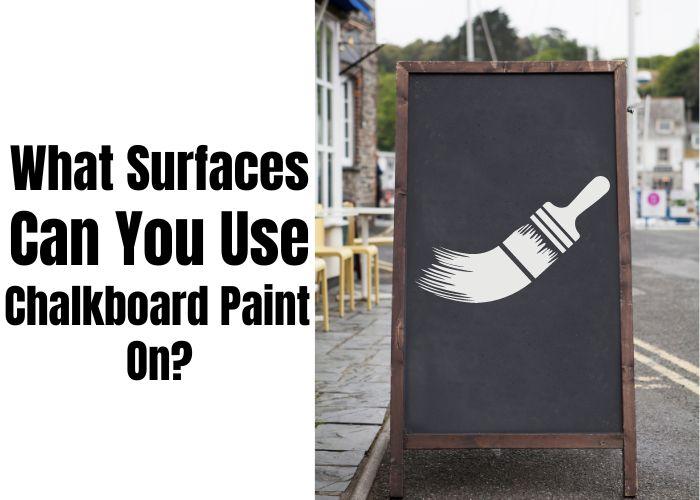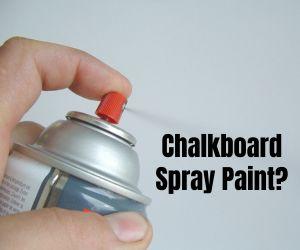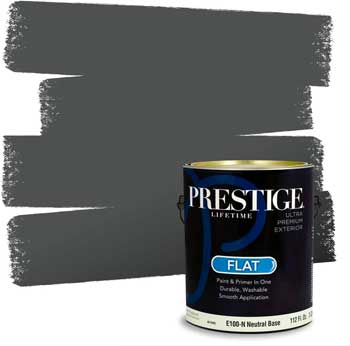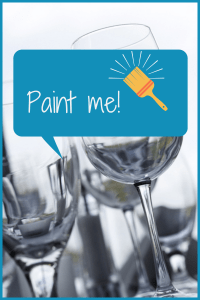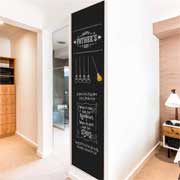Wondering if you can use chalkboard paint on wood, metal, glass, plastic or ceramic surfaces? We have all the answers you need, plus 5 helpful tips on getting the best results. Ready to transform your furnishings or home decor? Let’s get started!
Chalkboard paint (and chalk paint) has become a hot, trendy finish for furniture, crafts and other home renovation projects. Not to mention, you can turn an entire wall, door or tabletop into a giant chalkboard in under an hour.
Note: Not only can you now get chalkboard paint in virtually any color, you can make it yourself from a few inexpensive ingredients. You can even buy chalkboard spray paint to make textured or angled items much faster and easier to cover.
So, What Can You Use Chalkboard Paint On?
First of all, you can apply chalkboard paint on many different surfaces. For example, you can use it on wood, metal, glass, ceramic and also plastic items.
Note: More importantly, however, you want to prep the surface before you apply chalk paint. In other words, make sure that it’s clean and dry before painting so you get better adhesion and a more professional finished look.
Pro Tips to Get the Best Chalkboard Paint Results
1. Using Chalkboard Paint on Wood:
Some porous woods (ie. cedar or pine) may require primer before paint application. On the other hand, hardwoods like maple or oak don’t need the extra prep work. And if you’re like me and don’t always know which wood is which, play it safe and use a chalkboard paint and primer in one.
2. Painting on Metal:
You can also use chalkboard paint on metal patio furniture, picture frames, refrigerator doors, etc.. As we talked about above, you want to clean the surface thoroughly and also remove any rust or chipped paint. Use some sandpaper if needed to achieve a smooth paintable surface.
3. How to Paint Ceramic Items with Chalk Paint:
Chalkboard paint works fine on ceramic surfaces as well. However, just like porous wood, you want to apply a primer first (and clean it of course). You can use the chalkboard paint and primer or use a primer separately if you have a certain color or brand in mind that you want to use.
4. Using Chalkboard Paint on Glass:
Some people think that chalk paint won’t work on glass because it won’t stick – but all you need is, yes you guessed it, primer. This extra step really makes a difference and is worth the additional cost because the paint won’t chip, scratch or flake off as easily.
Also see: 5 Easy Tips for Applying Chalkboard Paint on Glass
To speed up the job, use spray-on primer. You can get it in white or colored, and many times the color doesn’t matter. That said, some people use a darker tone primer to mask the previous color better than white. I typically use Rustoleum or Zinsser primer and have gotten great coverage from both brands.
5. Will Chalkboard Paint Really Stick to Plastic?
Primer once again comes to the rescue here. Who knew primer was the magical solution to everyone’s problems, right? That said, flexible plastic items that bend don’t do so well with any paint, as there’s more chance of cracking or flaking.

